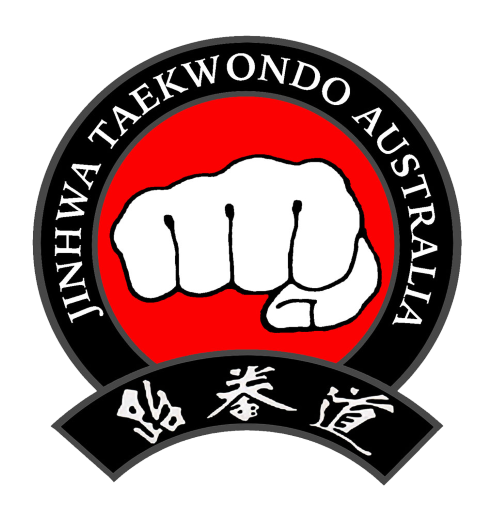Our Story
Taekwondo History
Beginning in 1945 after the end of the occupation of Korea by Imperial Japan, many martial arts schools (Kwans) opened up throughout the country. The individuals running these school were Korean’s who had studied Japanese and Chinese Martial Arts while living in Japan. Upon returning to their home elements of these arts were incorporated into traditional Korean arts such as Taekkyeon, Hapkido and Hwa Rang Do.
Each Kwan practiced their own unique style or martial art; some more focused on foreign arts, others heavily influenced by traditional Korean arts. During this time some of these instructors were utilised to implement military training which increased the popularity of training amongst the general public.
In 1955 the leaders of the different Kwans agreed to merge all styles and unify their art, this was the birth of Taekwondo; although at this time the name given was Tae Soo Do. This name consists of the Hanja characters 跆 tae “to stomp, trample”, 手 su “hand” and 道 do “way, discipline“.
Our Story
Taekwondo History
Beginning in 1945 after the end of the occupation of Korea by Imperial Japan, many martial arts schools (Kwans) opened up throughout the country. The individuals running these school were Korean’s who had studied Japanese and Chinese Martial Arts while living in Japan. Upon returning to their home elements of these arts were incorporated into traditional Korean arts such as Taekkyeon, Hapkido and Hwa Rang Do.
Each Kwan practiced their own unique style or martial art; some more focused on foreign arts, others heavily influenced by traditional Korean arts. During this time some of these instructors were utilised to implement military training which increased the popularity of training amongst the general public.
In 1955 the leaders of the different Kwans agreed to merge all styles and unify their art, this was the birth of Taekwondo; although at this time the name given was Tae Soo Do. This name consists of the Hanja characters 跆 tae “to stomp, trample”, 手 su “hand” and 道 do “way, discipline“.
Choi Hong Hi advocated changing the name to Taekwondo in 1958, replacing 手 su “hand” with 拳 kwon “fist”, the term also used for “martial arts” in Chinese. This has contributed to Choi being recognised as the father of Taekwondo.
It was at this time that Choi also created the first encyclopedia of Taekwondo, a book which unifies the styles of each Kwan and demonstrates the combination of the contributing arts. If you ever see a copy of this book, you might also recognise the fist on the front as it is the inspiration for the fist in Jinhwa Taekwondo’s emblem.
In 1959 the Korea Taekwondo Association was formed, headed by Choi Hong Hi and supported by 12 Masters of Taekwondo, the association was tasked with developing, standardising and building the art in Korea.


So how did we get from there to here?
In the mid 60’s Chong Chul Rhee; one of the twelve original masters of taekwondo and a former unarmed combat instructor in the Korean Marines; was tasked with introducing Taekwondo to Australia. From here Taekwondo has grown and evolved in Australia, and now includes numerous schools which still practice the traditional style of taekwondo with a focus on self-defence while others have bought their own style to the art and have developed into competition style.
Jinhwa Taekwondo
Jinhwa Taekwondo maintains the original style of taekwondo that was created in the 1950’s with its key focus on self-defence. However, we continue to develop the art, drawing inspiration from others and always striving to improve. The Senior Instructors in Jinhwa Taekwondo have many years of experience and have been trained in the original Rhee Taekwondo and several offshoots, now bringing their experience together to create one complete Taekwondo School.
At Jinhwa Taekwondo we maintain the practical application of the art; avoiding competition and sport aspects to foster a positive learning and non-competitive environment. We pride ourselves in developing capable, well rounded martial artist of all ages and abilities.
What does Jinhwa mean?

Jinhwa is the Korean term for evolve or evolution. We have seen that Taekwondo is an art that while relatively new, is derived from many style of martial art and has ancient roots in its training. We believe that Taekwondo is a constantly evolving art which is always looking to improve and if we develop and introduce new techniques that suit the style, it will continue to strengthen the art. This is especially true in black belt training where years of experience result in amazing developments in ability.
We are always learning more and more about the human body, so it stands to reason that we will always be finding ways to refine and improve existing techniques, as well as finding improved ways to train. You only need to compare the best martial artists of the 50’s to the best today, to see how advancement in our knowledge of training and the human body has resulted in individuals being capable of some incredible abilities.
Our Emblem
The Jinhwa Taekwondo emblem has been very specifically designed to pay respect to our history and the art of Taekwondo.
The first and most recognisable aspect of the emblem is the encircled fist which as mentioned earlier is the first symbol of taekwondo that was used on the original ‘Encyclopaedia of Taekwondo’ and pays respect to the Korean heritage of the art.
The second key characteristic is the black belt circling the fist, representing the target of training and paying respect to the Japanese contribution to our art, part of which included the introduction of belts to signify rank and ability.
Next is the Hanja characters for Taekwondo. These are the original characters that named the art and are based on ancient Korean text which pays respect to the Korean arts which influenced the style.
Lastly Jinhwa Taekwondo Australia, emphasising Jinhwa Taekwondo’s Australian origins

